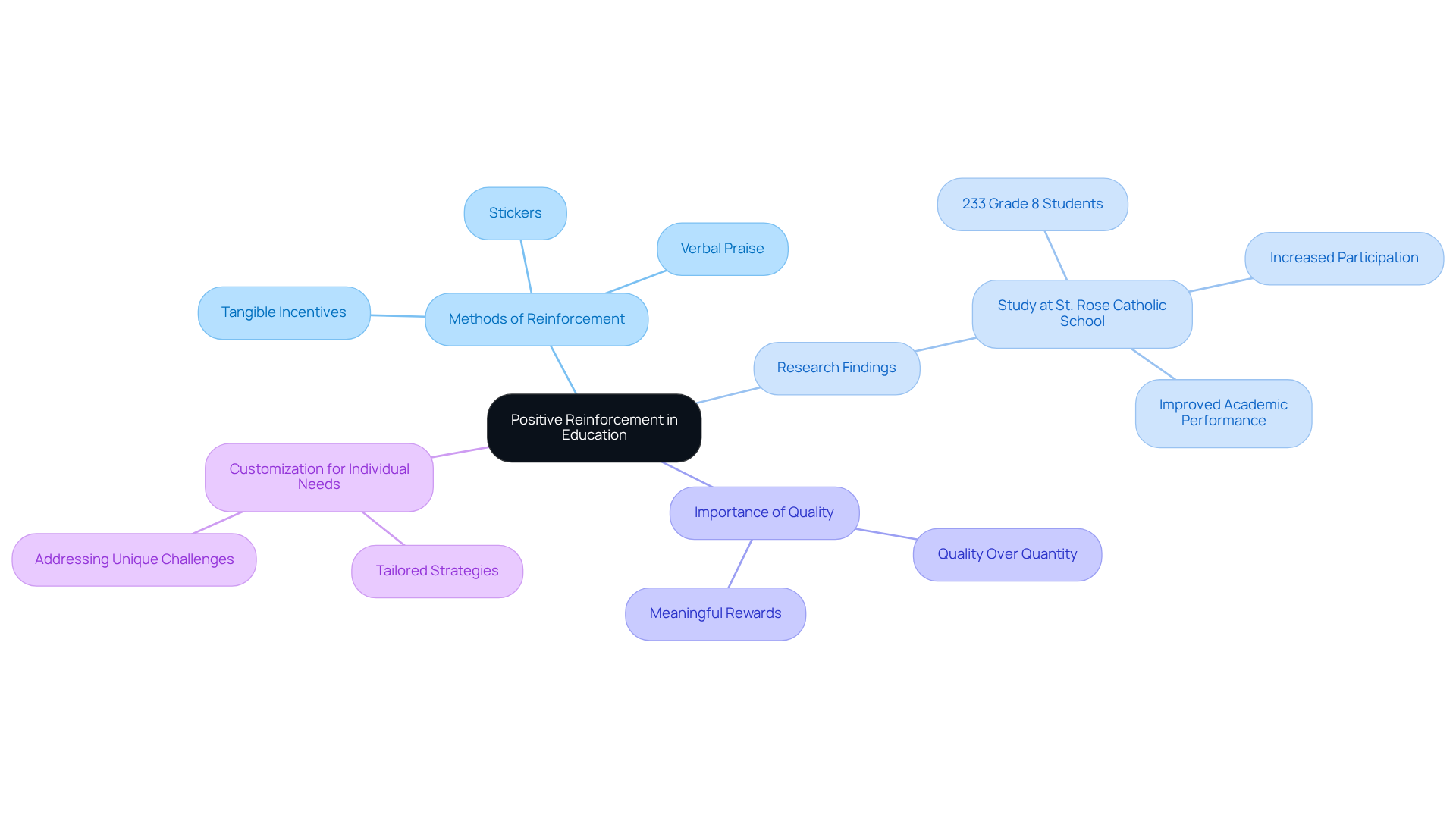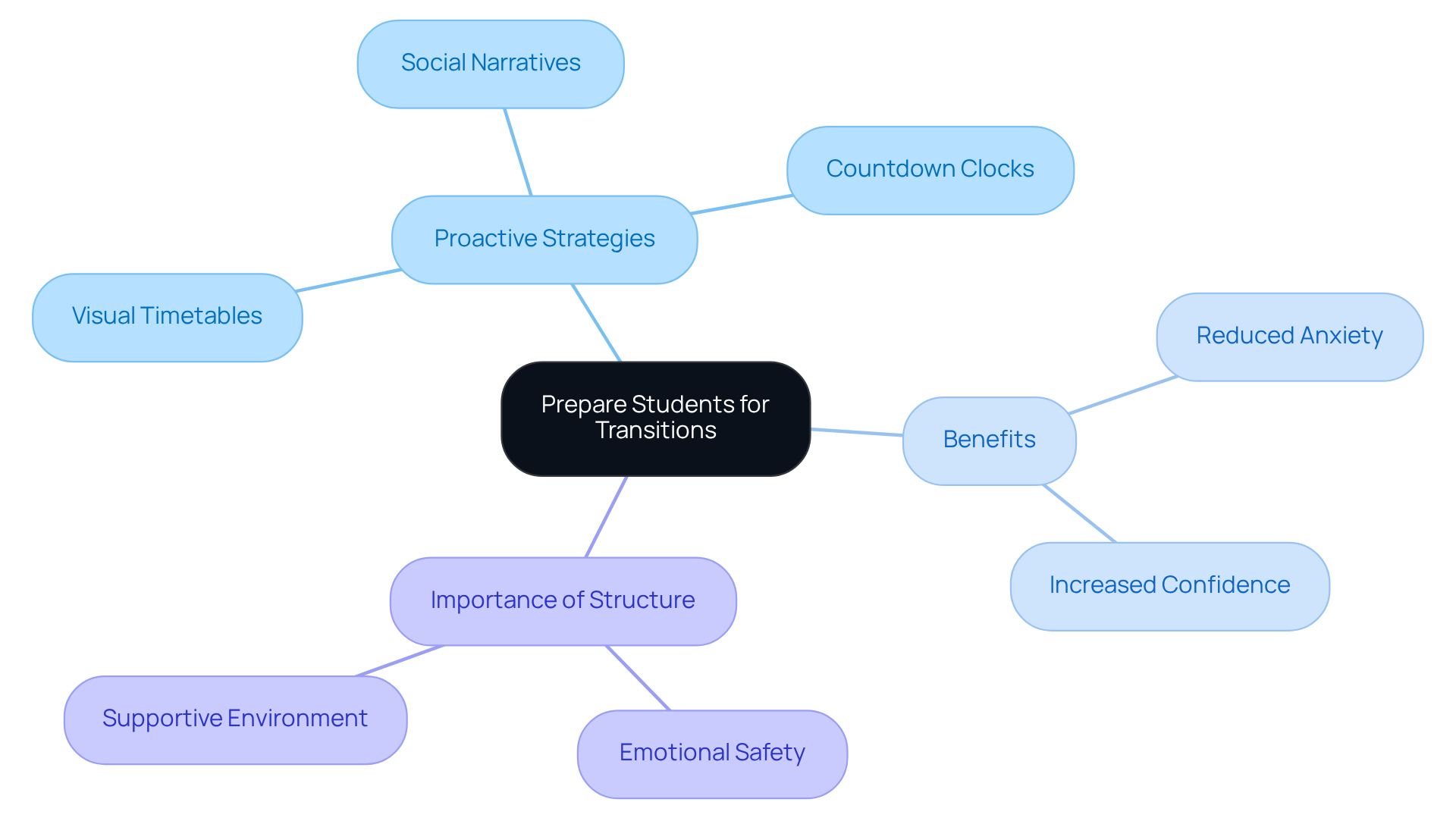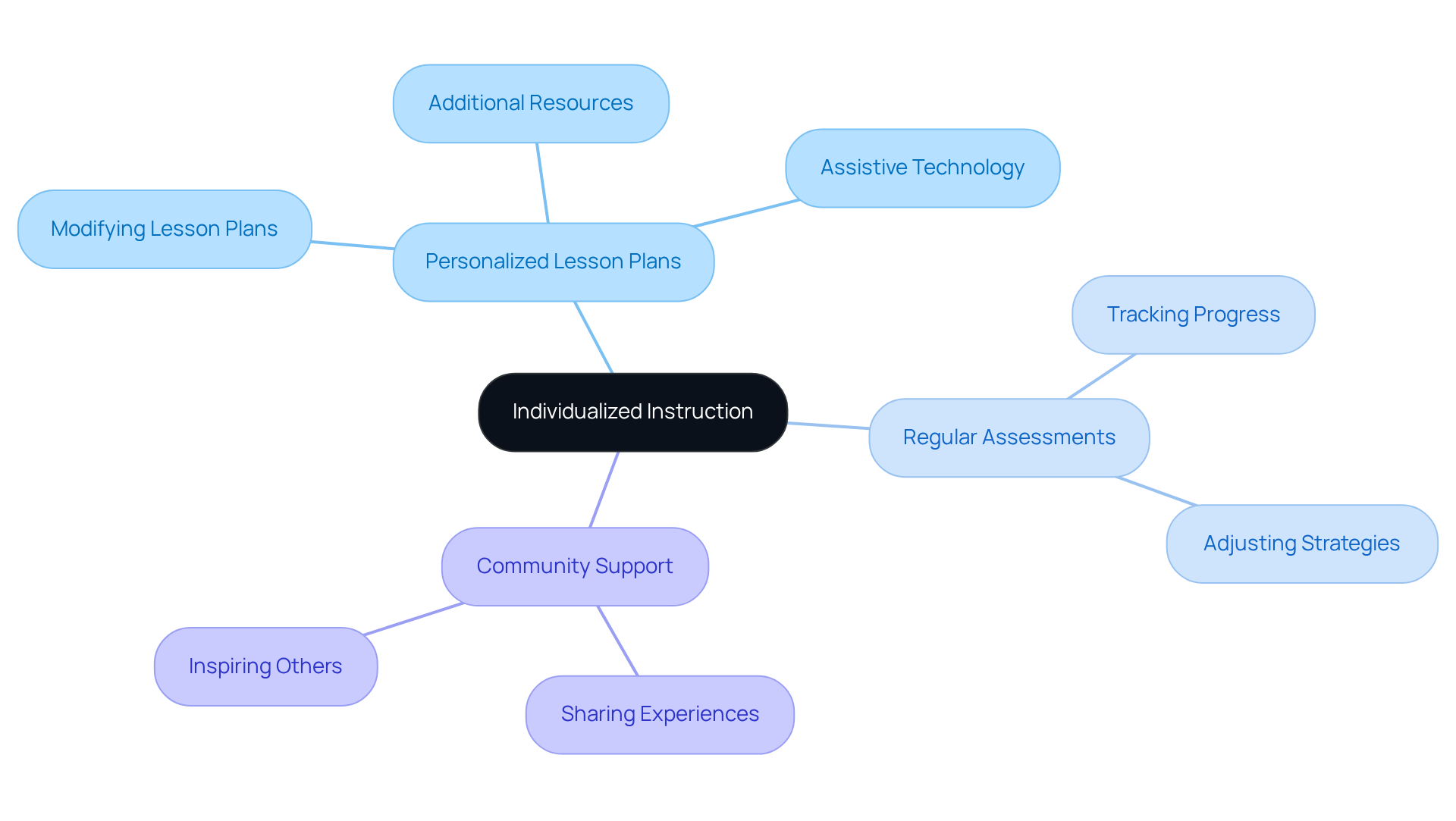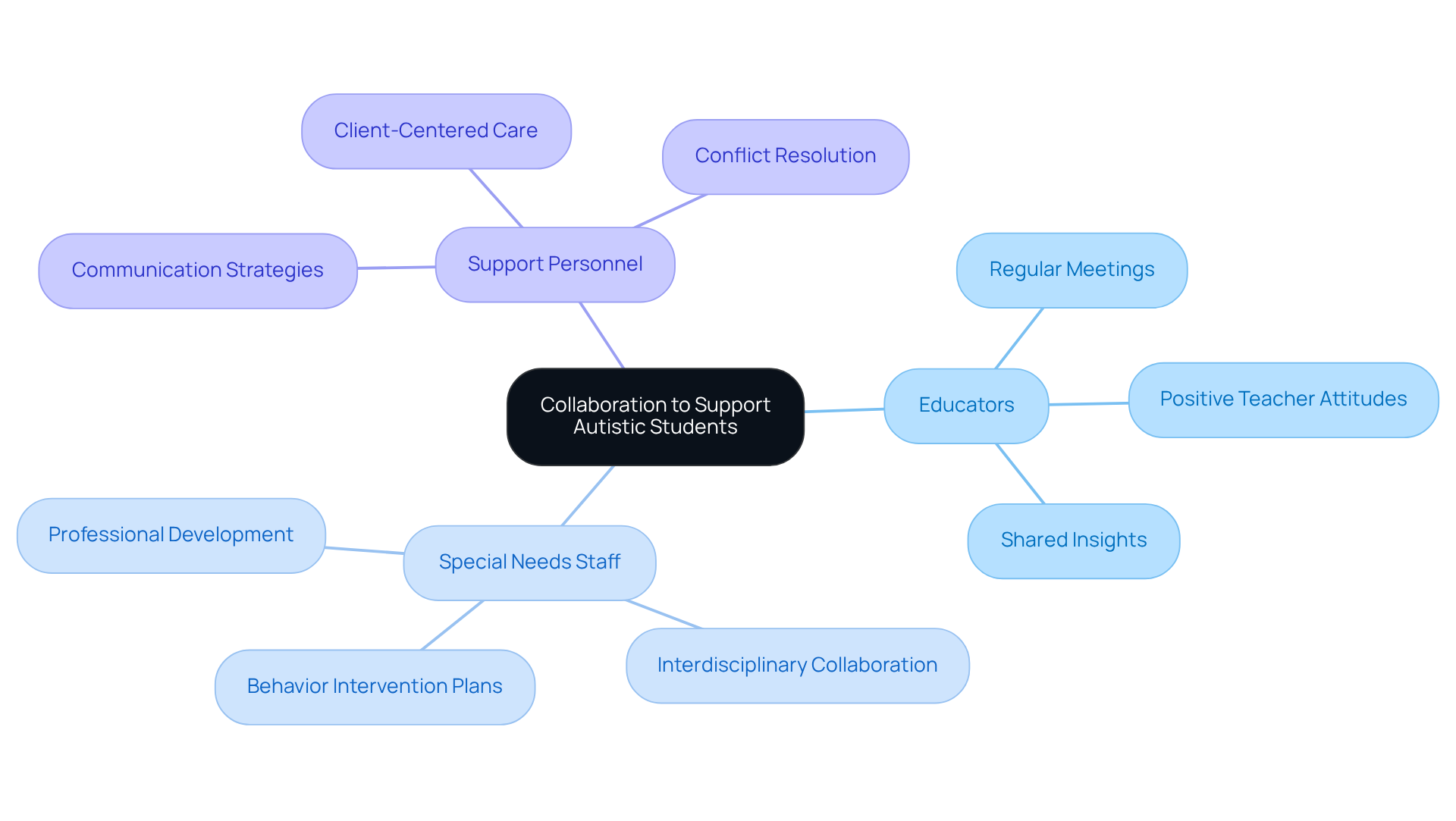Overview
This article presents ten compassionate strategies for supporting students with autism in the classroom, highlighting the significance of individualized and inclusive teaching approaches. Each strategy, including the creation of sensory-friendly spaces and the encouragement of positive peer relationships, is supported by research and practical examples. It underscores the necessity for educators to adapt their methods to effectively address the unique needs of autistic learners. By understanding these strategies, we can foster an environment where every student feels valued and supported.
Introduction
The increasing prevalence of autism spectrum disorder (ASD) in today’s classrooms calls for innovative strategies to nurture an inclusive learning environment. With one in 54 children diagnosed, educators are faced with the profound challenge of not only understanding but also effectively supporting these diverse learners. This article delves into ten essential strategies that empower teachers to create supportive classrooms, enhance engagement, and promote positive social interactions for students with autism.
How can educators transform their teaching practices to meet the unique needs of every student on the spectrum? Together, we can explore these vital approaches.
About ASD Media: Comprehensive Resources for Autism Support
ASD Media is dedicated to enhancing the application of ABA therapy by providing extensive resources and support for parents and professionals navigating developmental disorders. Their mission is to cultivate a nurturing community where individuals can share their experiences and learn from one another. By subscribing to their newsletter, educators and parents can stay informed about the latest strategies and insights, empowering them to better support students with autism in the classroom.
This initiative holds particular significance, especially considering the CDC's estimation that one in 54 children is diagnosed with a developmental disorder (ASD). This statistic underscores the growing need for informed support and resources. Moreover, the financial implications are profound, as the typical medical costs for a child with ASD exceed those without by $4,110 to $6,200 annually. This reality highlights the urgent necessity for effective support resources.
Additionally, state insurance requirements have contributed to a 16% increase in board-certified behavioral analysts, reflecting a rising demand for services related to developmental disorders. Recent funding increases in Virginia for individuals on the Medicaid Home and Community-Based Developmental Disability Waiver Priority One Wait List signify advancements in support for developmental disabilities.
Furthermore, the impact of COVID-19 has significantly affected students with autism, making the resources offered by ASD Media even more crucial in addressing these challenges. Together, we can foster a community of understanding and support, ensuring that no one faces these difficulties alone.

Establish a Supportive Learning Environment for Autistic Students
To truly support learners on the spectrum, educators must cultivate a warm and organized classroom environment. This means setting clear expectations and consistent routines, which play a vital role in alleviating anxiety and enhancing focus. A calm atmosphere allows learners to thrive, while weaving their interests into lessons invites participation and fosters a sense of belonging. Studies reveal that structured settings significantly improve learning outcomes for students with autism, nurturing positive interactions among peers and encouraging teamwork.
By genuinely listening to learners and adjusting to their unique needs, educators can create an inclusive environment that empowers students with autism to reach their full potential. In this journey, it's essential for educators to remember that every small step taken towards understanding and accommodating these learners can lead to meaningful progress and success.

Incorporate Visual Aids to Enhance Learning for Students with Autism
Visual aids, such as charts, diagrams, and picture schedules, play a pivotal role in helping students with autism understand and engage with content more effectively. These tools provide tangible representations of information, making comprehension easier and helping maintain focus. By incorporating visual supports into daily lessons, we can create an environment that reduces anxiety for students with autism and provides clear expectations, fostering a sense of security.
Imagine a child entering a classroom filled with visual cues that guide their day. This structured approach not only aids in understanding for students with autism but also nurtures their emotional well-being. As parents, recognizing the power of these visual tools can empower us to support our children in navigating their educational journeys.
Let’s take action together by exploring ways to integrate these visual aids into our routines. Share your experiences or thoughts on how visual supports have made a difference in your child's learning. Together, we can create a more inclusive and understanding environment for all, including students with autism.

Utilize Positive Reinforcement to Encourage Student Engagement
Implementing a robust system of positive reinforcement can dramatically enhance engagement among learners, particularly in classrooms with students with autism. It’s essential for teachers to actively recognize and reward positive behaviors through various means, such as verbal praise, stickers, or tangible incentives. Research shows that these strategies not only encourage active participation but also reinforce learners' efforts, leading to improved learning outcomes.
For example, a study involving 233 eighth graders at St. Rose Catholic School, Inc. demonstrated that positive reinforcement significantly increased participation and academic performance. Students expressed feeling more challenged and motivated, fostering intrinsic motivation and respect for their teachers. As B.F. Skinner wisely noted, "The way positive reinforcement is carried out is more important than the amount."
Furthermore, behavior analysts emphasize that the quality of reinforcement is crucial; meaningful rewards can create a more significant impact than mere quantity. By customizing reinforcement strategies to meet individual needs, educators can effectively foster a supportive learning atmosphere that encourages engagement and positive behavior among all learners.
Addressing behavior issues early is also vital, as it aligns with a proactive strategy for behavior management that supports students with autism. Together, let’s create an environment where every learner feels valued and empowered.

Prepare Students for Transitions to Reduce Anxiety and Disruption
To facilitate smoother transitions for students with autism, it is essential for educators to implement proactive strategies that not only reduce anxiety but also promote confidence. Imagine the relief that comes from giving prior warning about forthcoming modifications; this can be accomplished through visual timetables, social narratives, and countdown clocks, which help learners anticipate what follows. Research shows that visual schedules significantly enhance understanding and predictability, making transitions feel less daunting.
Regular practice of transitions in a supportive environment allows students to build familiarity and comfort with changes throughout the school day. For instance, a case study titled 'Evidence-Based Instructional Strategies for Transition' revealed that an educational setting incorporating visual schedules experienced a marked decrease in anxiety-related behaviors during transitions. This highlights the effectiveness of such approaches. Furthermore, specialists in the field emphasize the importance of establishing a structured and predictable environment, reinforcing that preparation is vital for facilitating transitions. As one specialist wisely noted, 'Children learn best when they feel safe and valued for who they are now.'
By prioritizing these strategies, educators can create a more inclusive and supportive classroom environment, enabling students with autism to navigate changes with greater ease. Consistently applying these strategies will cultivate emotional safety, allowing learners to truly flourish in their educational settings. Let's work together to ensure every child feels valued and supported as they face transitions in their day-to-day lives.

Foster Positive Peer Relationships to Support Social Skills Development
Nurturing positive peer connections is vital for the social growth of autistic individuals. Teachers can significantly enhance these relationships by implementing group activities that foster collaboration and teamwork. For example, organized games and collaborative projects not only promote social interaction but also help learners practice essential skills like sharing and taking turns. Moreover, direct instruction in these social skills can empower learners to navigate their interactions more effectively.
Research shows that when learners engage in group activities, they experience notable improvements in social competence, with an overall effect size of 0.51 for Group Social Skills Interventions (GSSIs). This statistic highlights the crucial role these strategies play in their overall development. Additionally, educators emphasize the importance of creating a supportive atmosphere where learners feel safe to express themselves and build connections with their peers.
As noted by experts, "Understanding the shape and nature of changes in GSSIs according to different informants not only offers practical information about what outcomes can be affected." By prioritizing these strategies, educators can make a meaningful impact on the social abilities and peer connections of students with autism, ultimately contributing to a more inclusive learning environment. Let's work together to create spaces where every learner can thrive socially and emotionally.

Implement Individualized Instruction to Meet Unique Learning Needs
Every student with autism is unique, and it's essential for educators to embrace personalized instruction plans that cater to their distinctive learning styles and needs. Imagine a classroom where each learner, particularly students with autism, feels understood and supported—this can be achieved by modifying lesson plans, providing additional resources, or integrating assistive technology to enhance their learning experiences.
Regular assessments play a crucial role in this journey. They not only help track progress but also allow for adjustments in strategies to ensure that every child is on the right path. By staying attuned to their needs, educators can foster an environment where learners thrive.
As we reflect on these approaches, consider how you can implement similar strategies in your educational setting. What resources or tools could make a difference for your students? Sharing your experiences can inspire others and create a community of support for students with autism who are navigating the challenges of teaching.

Create Sensory-Friendly Spaces to Enhance Comfort and Focus
Creating sensory-friendly environments within educational settings is essential for supporting students with autism. Imagine a space where calming tools like noise-canceling headphones, fidget toys, and soft lighting come together to create a soothing atmosphere. Research shows that these sensory-friendly environments can significantly enhance learning outcomes. In fact, 49% of parents and 36% of teachers believe that sensory differences constantly impact school life. Furthermore, 40% of parents reported that sensory differences lead to distractions in the learning environment, highlighting the profound influence on education.
Allowing learners to take breaks in these designated areas can effectively manage sensory overload, which often leads to anxiety. This approach enables them to return to their academic tasks with renewed focus and engagement. Occupational therapists emphasize the value of incorporating sensory tools, with one stating, "Soothing music helps one of my little people concentrate." Additionally, 73% of educators have observed that at least half of their students with autism experience sensory differences, underscoring the prevalence of sensory needs in the classroom.
By prioritizing sensory-friendly designs, educators can cultivate an inclusive environment that promotes comfort and enhances the overall learning experience for students with autism. Together, we can create spaces that truly support every learner's needs.

Provide Ongoing Training for Educators on Autism Support Strategies
Continuous training for educators is essential for equipping them with effective strategies to support students with autism. By participating in workshops, webinars, and collaborative learning opportunities, educators can deepen their understanding of autism and gain practical tools for use in educational settings. This commitment to professional growth fosters a culture of ongoing improvement and inclusivity, allowing educators to adapt to the diverse needs of their learners.
When educators receive focused training, they often report significantly enhanced experiences and outcomes for students with autism. For example, teachers who have undergone autism-specific training report 75% more positive classroom experiences. Moreover, programs that incorporate neurodiversity perspectives yield 37% better outcomes compared to traditional deficit-focused approaches. This dedication to professional development is crucial for creating supportive learning environments where every student can thrive.
As we consider the impact of continuous training, we invite educators and parents alike to reflect on their experiences. How has training shaped your approach to teaching or supporting students with autism? Sharing stories and insights can help build a community of understanding and support. Together, we can ensure that every educator is equipped to foster an inclusive and nurturing space for all learners.

Encourage Collaboration Among Staff to Support Autistic Students
Encouraging cooperation among educators, special needs staff, and support personnel is essential for effectively assisting students with autism. Imagine a world where every team member works in harmony, sharing insights and strategies through regular meetings. This collaborative effort not only establishes a unified support system but also enriches the educational experience for our learners.
Research indicates that positive teacher attitudes play a crucial role in successful inclusion, leading to better outcomes for students with autism. Moreover, case studies show that schools that prioritize structured team meetings witness significant improvements in communication and coordination, resulting in more effective interventions.
By embracing collaboration and committing to ongoing professional development, educational teams can profoundly enhance the learning environment and outcomes for students with autism. Together, we can make a difference.

Conclusion
Supporting students with autism in the classroom is not just important; it is essential. Educators hold a pivotal role in creating an inclusive and nurturing environment. By employing targeted strategies, teachers can effectively meet the unique needs of these learners, ensuring they feel welcomed and empowered to thrive both academically and socially.
In this article, we have explored ten essential strategies, such as:
- Establishing supportive learning environments
- Utilizing visual aids
- Implementing positive reinforcement
Each approach highlights the importance of recognizing individual needs, preparing students for transitions, and nurturing positive peer relationships. Additionally, the emphasis on individualized instruction and the creation of sensory-friendly spaces underscores the multifaceted nature of supporting students with autism.
This collective effort to enhance autism support in classrooms serves as a heartfelt call to action for educators, parents, and the community. By embracing these strategies and fostering collaboration among staff, we can create a more inclusive educational landscape. It is through our commitment to understanding and supporting every learner that we can make meaningful progress, ensuring that students with autism not only succeed but also flourish in their educational journeys.
Frequently Asked Questions
What is the mission of ASD Media?
ASD Media is dedicated to enhancing the application of ABA therapy by providing extensive resources and support for parents and professionals navigating developmental disorders, aiming to cultivate a nurturing community for sharing experiences and learning.
Why is the work of ASD Media significant?
ASD Media's work is significant due to the CDC's estimation that one in 54 children is diagnosed with a developmental disorder, highlighting the growing need for informed support and resources for families and educators.
What are the financial implications of autism spectrum disorder (ASD) for families?
The typical medical costs for a child with ASD exceed those without by $4,110 to $6,200 annually, underscoring the urgent necessity for effective support resources.
How has the demand for services related to developmental disorders changed recently?
There has been a 16% increase in board-certified behavioral analysts due to state insurance requirements, reflecting a rising demand for services related to developmental disorders.
What recent advancements have been made in support for individuals with developmental disabilities?
Recent funding increases in Virginia for individuals on the Medicaid Home and Community-Based Developmental Disability Waiver Priority One Wait List signify advancements in support for developmental disabilities.
How has COVID-19 impacted students with autism?
The impact of COVID-19 has significantly affected students with autism, making the resources offered by ASD Media crucial in addressing these challenges.
What is essential for creating a supportive learning environment for autistic students?
Educators must cultivate a warm and organized classroom environment with clear expectations and consistent routines to alleviate anxiety and enhance focus for learners on the spectrum.
How can educators foster a sense of belonging for students with autism?
By weaving students' interests into lessons and genuinely listening to their unique needs, educators can create an inclusive environment that empowers students with autism.
What role do visual aids play in the learning of students with autism?
Visual aids, such as charts and picture schedules, help students with autism understand and engage with content more effectively, reducing anxiety and providing clear expectations.
How can parents support their children with autism in their educational journeys?
Parents can recognize the power of visual tools and incorporate them into routines, sharing experiences to create a more inclusive and understanding environment for students with autism.




